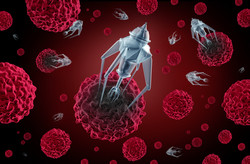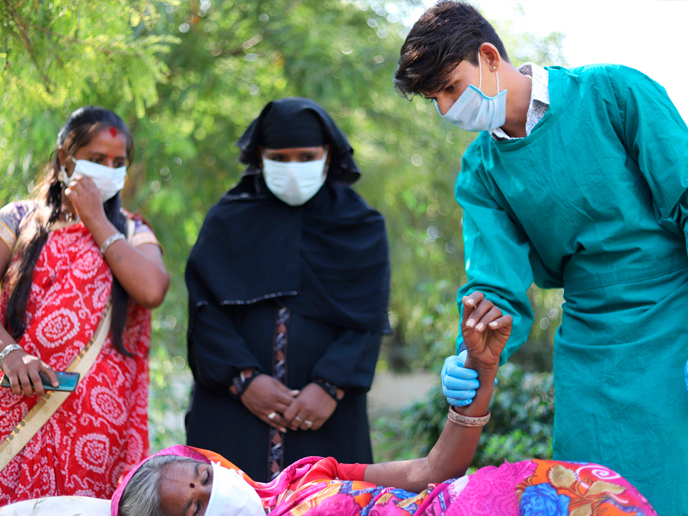Nanoparticles aid cancer therapy
Photodynamic therapy (PDT) is a clinically approved cancer treatment approach, which utilises light to kill cancer cells. More specifically, patients are administered a photosensitiser molecule that travels to the tumour site and becomes cytotoxic upon irradiation with light of specific wavelength. To date, only five photosensitisers have been approved for clinical applications and all suffer from serious drawbacks, including low selectivity and skin sensitisation. The EU-funded NANOPDT (Efficient tumor targeting and therapy using near-infrared nanoparticles) project proposes to address these limitations by developing nanoparticles loaded with photosensitiser molecules. Nanoparticles can accumulate at tumour sites through passive or active targeting and their physicochemical properties can be manipulated to accelerate clearance and reduce non-specific binding. To achieve this, the NANOPDT consortium has generated particles with less than 10 nm hydrodynamic radius and a hydrophilic surface. They utilised water-compatible reactions to ensure biocompatibility of the resulting nanoparticles. They also modified their charge and coated them with various polymers to enable non-covalent loading of either a fluorescent dye or a photodynamic agent. Biodistribution studies so far indicate an overall ubiquitous distribution but only certain particles seem to fulfil the desired clearance times. In particular, the generated zwitterionic nanoparticles exhibit prolonged distribution and increased terminal half-lives in the bloodstream. Ongoing efforts concentrate on increasing nanoparticle uptake by coating them with RGD peptides or incorporating different dyes. This will offer great versatility in targeting options thereby expanding the range of nanoparticle-loaded photosensitisers and maximising their applicability. The final project phase will focus on monitoring tumour growth and testing the anti-tumour efficacy of these nanoparticles in animal models of cancer using fluorescence imaging technology.







